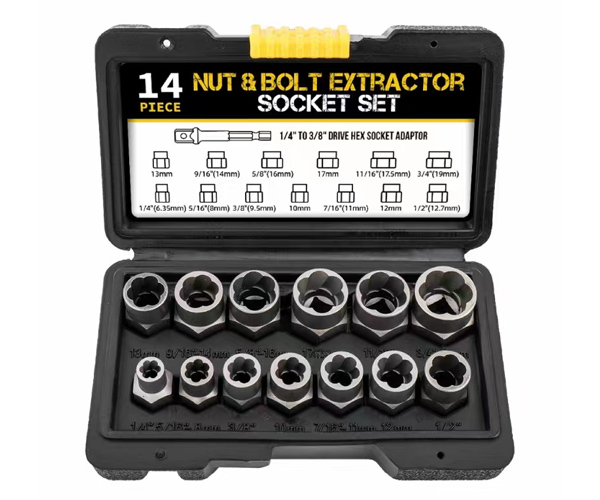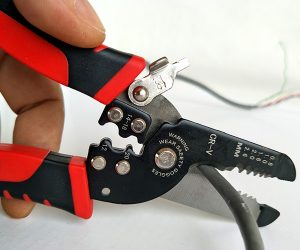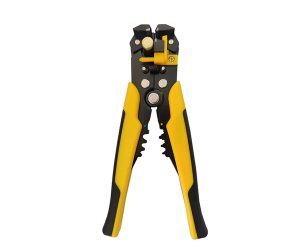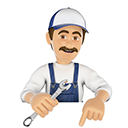Using a screw extractor is a must-know skill for anyone in the trade or DIY scene. If you’ve ever faced a stripped or broken screw, you know the frustration of trying to fix it. So, what’s the real story with screw extractors? In this guide, we’ll walk you through everything you need to know about using a screw extractor, from choosing the right tool to applying it in various scenarios. Whether you’re working with wood, metal, or automotive parts, this tool can save you time and frustration. Let’s dive in!
1. What is a Screw Extractor?
So, what exactly is a screw extractor? A screw extractor is a tool designed to help remove screws that have been stripped, damaged, or broken. It works by creating a reverse thread inside the damaged screw, allowing you to remove it using a drill or wrench. There are several types of screw extractors on the market, each designed for different applications. For example, spiral screw extractors are commonly used for smaller screws, while left-handed screw extractors are ideal for screws that have been drilled too deep.
This tool is a lifesaver in both professional and DIY settings. But here’s the kicker: many people don’t realize that using a screw extractor is not just about removing the screw—it’s also about preserving the material around it. By using the right extractor, you can avoid further damage to the surrounding area.
Here are the main types of screw extractors:
- Spiral screw extractors: These are twisted and ideal for smaller screws.
- Left-handed screw extractors: These are designed for screws that require a counterclockwise turn to loosen.
- Extractor kits: These often come with multiple sizes and types of extractors to cover a variety of situations.
| Type of Screw Extractor | Best For | Description |
|---|---|---|
| Spiral screw extractors | Small, stripped screws | Twisted design grips the screw’s center |
| Left-handed screw extractors | Stubborn, stuck screws | Uses reverse threads to remove deeply embedded screws |
| Extractor kits | Various screw types | Comes with multiple sizes and extractors |
2. When Should You Use a Screw Extractor?
Ever wondered when the best time is to grab a screw extractor? It’s easy to overlook this tool until you’re faced with a stuck or stripped screw. Knowing when to use it is crucial to prevent unnecessary damage to both the screw and surrounding material. If you’ve stripped the screw head by using the wrong screwdriver or have encountered a broken screw, this is the perfect time to reach for the screw extractor.
Ready for the good part? Screw extractors can also be incredibly useful when working with old, rusted screws or screws that have been damaged over time. If a screw becomes so worn down that it’s nearly impossible to grip, it’s time for an extractor.
Here are some key scenarios where a screw extractor is necessary:
- Stripped screw heads that can’t be removed with a standard tool
- Damaged screws that are stuck due to rust or corrosion
- Broken screws embedded too deep for traditional removal methods
| Situation | Action | Tool Needed |
|---|---|---|
| Stripped screw | Use a screw extractor | Spiral screw extractor |
| Rusted screw | Loosen with heat and use extractor | Left-handed screw extractor |
| Broken screw | Extract the remaining screw part | Extractor kit |
3. How Does a Screw Extractor Work?
How does a screw extractor actually do its job? It’s all about precision and the right technique. The basic principle behind a screw extractor is simple: it has a reverse thread that grips the damaged screw, allowing it to turn counterclockwise to remove the screw.
The process starts with the creation of a pilot hole in the damaged screw. You drill a small hole in the center of the screw, which allows the extractor to fit in and grip the screw’s surface. This is where it gets interesting… Once the extractor is in place, you turn it counterclockwise, and the reverse threads begin to grip the screw tightly, eventually loosening and removing it.
Here’s a breakdown of the steps:
- Drill a pilot hole into the damaged screw.
- Insert the screw extractor into the pilot hole.
- Turn the extractor counterclockwise using a drill or wrench.
- The extractor’s threads grip the screw, allowing you to pull it out.
| Step | Action | Tool Needed |
|---|---|---|
| 1 | Drill pilot hole | Drill |
| 2 | Insert screw extractor | Screw extractor |
| 3 | Turn counterclockwise | Drill or wrench |
| 4 | Remove screw | None |

4. What Tools Do You Need with a Screw Extractor?
What’s the deal with all the tools needed? Using a screw extractor isn’t a solo job. You’ll need several tools to make the process as smooth as possible. These tools include a drill, a wrench or drill chuck, and sometimes lubrication or heat, depending on the situation.
To get started, you’ll need the right size drill bit to create the pilot hole. What’s the real story here? The right drill bit size is crucial because if the hole is too large, the extractor won’t grip the screw properly, and if it’s too small, you won’t be able to get the extractor inside.
Other tools that might come in handy:
- Lubricants: These can help loosen rusted screws.
- Wrenches: You may need a wrench to grip the extractor and turn it properly.
| Tool | Purpose |
|---|---|
| Drill | To create a pilot hole in the screw |
| Wrench | To grip and turn the extractor |
| Lubricant | To loosen rusted screws |
| Heat gun | For stubborn rusted screws |
5. How to Choose the Right Screw Extractor for the Job?
Choosing the right screw extractor isn’t always as straightforward as it seems. The key is to consider the type of screw you’re dealing with and the severity of the damage. For example, if you’re working with a stripped screw head, a spiral screw extractor might be your best bet, while left-handed extractors are ideal for screws that are tightly stuck.
Here’s the kicker: there are extractor kits that provide a range of sizes, making it easier to select the right tool for any job. These kits can save you time and money, ensuring you have exactly what you need, whether you’re working on a small home project or a larger industrial job.
Here’s how to choose:
- Consider the size and depth of the screw.
- Look at the material of the screw (wood, metal, etc.).
- Choose an extractor that matches the screw’s condition (stripped, broken, rusted, etc.).
| Factor | Consideration | Extractor Type |
|---|---|---|
| Size of screw | Large or small | Size-specific spiral or left-handed extractors |
| Material | Wood, metal, etc. | Metal extractor kits |
| Condition of screw | Stripped, rusted, or broken | Combination of extractor types |
6. Step-by-Step Guide to Using a Screw Extractor
Ready to put everything into action? Here’s your step-by-step guide to using a screw extractor and making sure that stubborn screw comes out. The process might sound complicated at first, but with the right approach, you’ll have the screw removed in no time.
First, you need to drill a pilot hole in the center of the damaged screw. Make sure the hole is deep enough to allow the extractor to grip. This is where it gets interesting… Once the pilot hole is drilled, insert the extractor, ensuring it fits snugly. Then, turn the extractor counterclockwise using a drill or wrench. The reverse threads will do their job, and you’ll be able to remove the screw.
Here’s the breakdown of the process:
- Drill the pilot hole.
- Insert the screw extractor.
- Turn the extractor counterclockwise.
- Remove the screw.
| Step | Action | Tool Needed |
|---|---|---|
| 1 | Drill pilot hole | Drill bit |
| 2 | Insert extractor | Screw extractor |
| 3 | Turn counterclockwise | Drill or wrench |
| 4 | Remove screw | None |
7. Can You Use a Screw Extractor on Any Type of Screw?
You might be wondering if a screw extractor works on all types of screws. The answer is, it depends. Not all screws are made equal, and some materials might pose challenges for screw extractors. For instance, if a screw is too rusted or broken down to the point that there’s no longer enough surface for the extractor to grip, it may not work.
But here’s the kicker: Even if a screw extractor doesn’t work in these extreme cases, there are alternative methods you can use, like drilling out the screw completely or using a left-handed drill bit to help loosen the screw.
Here’s what you should know:
- Wood screws can often be removed easily with an extractor.
- Metal screws, especially those that are rusted, might require a bit more patience and preparation.
| Type of Screw | Extractor Use |
|---|---|
| Wood screws | Easy removal with spiral extractors |
| Metal screws | Requires proper extractor size and sometimes lubrication |
| Rusted screws | Might require heat or lubrication before extraction |
8. What Are the Different Types of Screw Extractors?
There’s more than one type of screw extractor, and choosing the right one for your project can make all the difference. Each type is designed for a specific purpose, and knowing which to use can help you save time and effort.
The most common types of screw extractors include spiral extractors, which are ideal for small, stripped screws, and left-handed extractors, which are used for screws that are stuck or deeply embedded.
Here are the most common types:
- Spiral screw extractors: Best for small screws that need a tight grip.
- Left-handed screw extractors: Used for screws that require reverse rotation to loosen.
- Extractor kits: A collection of different extractors designed for various screw sizes and conditions.
| Type | Best For | Features |
|---|---|---|
| Spiral screw extractors | Small screws | Twisted design for tight grip |
| Left-handed screw extractors | Stubborn, stuck screws | Reverse rotation for stuck screws |
| Extractor kits | Multiple screw types | Variety of sizes and types |
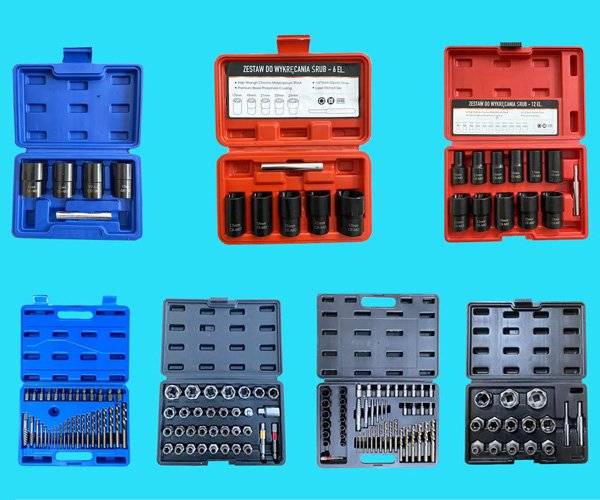
9. What Common Mistakes Should You Avoid When Using a Screw Extractor?
Common mistakes when using a screw extractor can cost you time and effort. The biggest mistake is failing to drill a proper pilot hole. If the hole is too small, the extractor won’t fit; if it’s too large, the extractor won’t grip. Another mistake is using the wrong size extractor, which can break or fail to remove the screw properly.
What’s the real story here? The key to success when using a screw extractor is precision. Take your time to ensure you’re using the right size drill bit and extractor.
Here are some mistakes to avoid:
- Not drilling a proper pilot hole
- Using the wrong size extractor
- Applying excessive force, which can break the extractor
| Mistake | Consequence | Solution |
|---|---|---|
| Not drilling a proper pilot hole | Extractor won’t grip | Drill a properly sized hole |
| Using the wrong size extractor | Poor grip or broken extractor | Select the right size for the screw |
| Applying too much force | Broken extractor or damage | Use steady pressure instead of force |
10. How Can You Prevent Screw Damage in the Future?
You might be thinking: how do I avoid dealing with stripped or broken screws in the first place? The best way to prevent screw damage is to use the right tools for the job and to be mindful of the material you’re working with. Choose screws that are the appropriate size and type for the job, and always use the correct screwdriver or drill bit to prevent stripping the head.
Here’s the kicker: Even with the best preventive measures, accidents happen. But knowing how to properly remove a damaged screw with a screw extractor can save you time and hassle.
Here’s how to prevent damage:
- Always use the correct screwdriver or drill bit
- Choose the right screw for the material you’re working with
- Avoid over-tightening screws, which can lead to stripping
| Prevention | Tip | Result |
|---|---|---|
| Use the right screwdriver | Match tool to screw type | Prevents stripping or damage |
| Choose proper screws | Size and type for the material | Reduces risk of damage |
| Avoid over-tightening | Proper torque when driving screws | Prevents damage to screw heads |
11. What Are Some Advanced Techniques for Stubborn Screws?
Ready for the good part? There are times when a simple screw extractor won’t cut it. When screws are rusted, deeply embedded, or just plain stubborn, you may need to use advanced techniques to get the job done.
Some advanced methods include using heat or lubrication to loosen rusted screws or combining a hammer with a screw extractor to get extra torque. These techniques are often the key to successfully removing screws that otherwise seem impossible to budge.
Here are some advanced techniques:
- Use a heat gun to expand the metal and loosen rusted screws
- Apply penetrating oil to lubricate the screw before extraction
- Use a hammer to apply extra torque when turning the extractor
| Technique | Best For | Tool Needed |
|---|---|---|
| Heat gun | Rusted or stuck screws | Heat gun |
| Penetrating oil | Lubricating rusted screws | Penetrating oil |
| Hammer | Stubborn screws | Hammer and extractor |
12. How Do You Maintain a Screw Extractor?
It’s important to take care of your screw extractor if you want it to last. After each use, clean the tool to remove any debris or rust. Store it in a dry place to prevent corrosion, and make sure to check it periodically for any signs of wear or damage.
What’s the real story here? Regular maintenance ensures your screw extractor will be ready when you need it, saving you money on replacements.
Here’s how to maintain your screw extractor:
- Clean it after each use
- Store it in a dry, rust-free environment
- Inspect it regularly for wear
| Maintenance | Action | Tool Needed |
|---|---|---|
| Cleaning | Remove debris and rust | Cloth or cleaning solution |
| Storage | Store in a dry place | Storage box or tool chest |
| Inspection | Check for wear or damage | Visual inspection |
13. Where Can You Buy Screw Extractors?
Wondering where to buy a screw extractor? You can find these tools at local hardware stores, but if you’re looking for a wider selection, online retailers like Amazon and eBay have a variety of options. Here’s the kicker: When shopping online, make sure to read reviews and check the product ratings to ensure you’re buying a high-quality extractor.
| Retailer | Product Range | Shipping Options |
|---|---|---|
| Amazon | Wide selection | Fast shipping |
| eBay | Competitive prices | Varies by seller |
| Local hardware stores | In-person shopping | Immediate availability |
14. How Much Do Screw Extractors Cost?
So, how much do screw extractors actually cost? Prices vary depending on the type and quality of the extractor. Single extractors can be relatively inexpensive, while full kits with multiple sizes and accessories can be more expensive.
| Type of Extractor | Price Range | Features |
|---|---|---|
| Single extractor | $5-$20 | Ideal for small, specific jobs |
| Extractor kit | $20-$50 | Includes multiple sizes for various jobs |
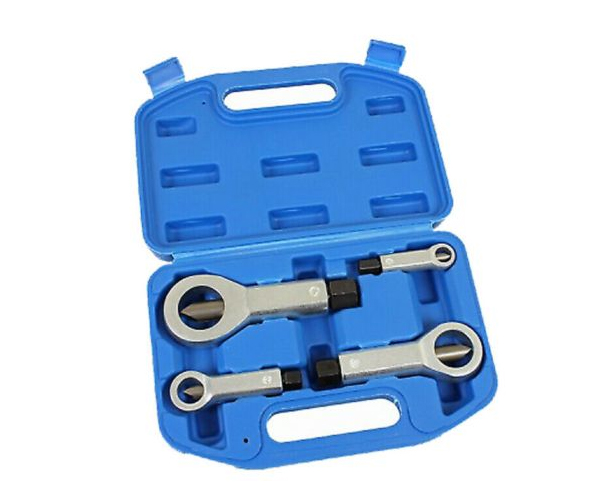
15. Can You Use a Screw Extractor for Automotive Repairs?
Here’s the good part: Yes, screw extractors can be extremely useful in automotive repairs. Whether you’re working on a car, motorcycle, or other vehicle, screw extractors can help remove stubborn screws without causing damage to surrounding parts.
In automotive repairs, you often deal with screws that are deep-set or rusted, making them ideal candidates for screw extraction.
| Vehicle Type | Screw Type | Extractor Type |
|---|---|---|
| Car | Rusted or stripped | Left-handed screw extractors |
| Motorcycle | Broken or stuck | Spiral screw extractors |
FAQ
Q1: What is a screw extractor?
A screw extractor is a tool used to remove stripped or damaged screws by using a reverse thread to grip and loosen the screw.
Q2: How does a screw extractor work?
A screw extractor creates a reverse thread inside the damaged screw, which allows you to turn it counterclockwise and remove it.
Q3: Can a screw extractor be used on all types of screws?
No, screw extractors may not work on all screws, especially those that are rusted beyond repair or too small to grip.
Q4: What common mistakes should you avoid when using a screw extractor?
Common mistakes include using the wrong size extractor, not drilling a proper pilot hole, and applying excessive force.
Q5: How do you maintain a screw extractor?
To maintain a screw extractor, clean it after use, store it in a dry place, and regularly inspect it for wear.
If you’re looking for high-quality screw extractors, look no further! At Kolarwin Tools, we specialize in manufacturing durable, reliable screw extractors that are perfect for both professional and DIY applications. Ready to solve your screw removal problems? Contact us today for inquiries or to place an order. We offer competitive pricing, excellent customer service, and fast delivery to meet all your needs. Reach out now to get started!

